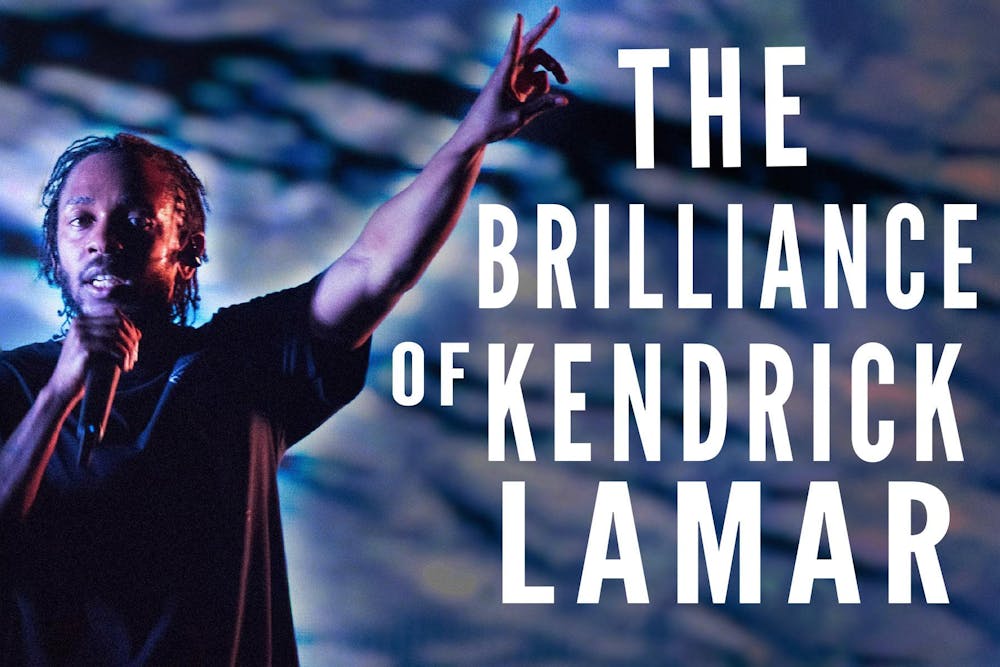Kendrick Lamar is one of the greatest artists alive. His work surpasses genre, and in every sense of the word, this artist is a poet. Nearly six years ago today, the 36-year-old rapper won a Pulitzer prize for his 2017 album, “DAMN.,” becoming the first artist to win the award outside of classical or jazz.
But what is it about Lamar‘s music that has changed the landscape of music for rap’s recognition in literature and pop culture?
Each piece of media released by Kendrick Lamar serves as a part of an overarching Kendrick Lamar project, sampling the seasons of the Compton-born artist’s life. In the albums leading up to “DAMN.,” Lamar critically analyzes the world he’s been subjected to as a Black American. 2011’s “Section.80” brings the cries of Black Americans during the 1980s and the War on Drugs as they live in Section 8 housing. 2012’s “good kid, m.A.A.d. city” is semi-autobiographical, centered around the rapper’s Compton upbringing and the temptation that exists in under-resourced areas. He asks the listener to think of “the kid that’s trying to escape that influence, trying his best to escape that influence, has always been pulled back in because of circumstances that be,” according to a 2012 interview.
The theme of Compton as a space of peace and danger is prevalent in subsequent Lamar projects, with 2015’s “To Pimp a Butterfly” critically interrogating American institutions for “pimping” out its “butterflies”: Black children. Each of these album’s bring us to “DAMN.,” a cacophony of the life he’s lived and the battles he continues to fight, even after being able to distance himself from the systemic issues laid bare in his home city.
“DAMN.” also asks a question rarely asked in popular culture and media at the time: Why should Black Americans have faith in the world they occupy? Much of the album centers around religion and how historically, God has served a symbol as either the ultimate savior or the reason for Lamar’s and many individuals’ damnation. Lamar continually fights battles with his faith, struggling to understand how an all-powerful God would allow him to exist in a world that hates him. He then takes a step further, asking if God may not be the person to offer safety, then who will? Certainly not the police or other governing bodies who continue to perpetrate violence against people of color, and he might not even be strong enough to fight.
If Lamar’s life’s purpose is to fight, then does he have a purpose if he isn’t “Strong Kendrick”? Who might he become as he battles religion and oppression in modern America? Is he “Wicked Kenny,” a vengeful man whose frustrations play out in songs “DNA.”, “ELEMENT.,” “HUMBLE.” and “LOVE.” and responds to his frustrations by soaking himself in life’s luxuries? Or is he “Weak Kenny,” who feels hollow as a result of God’s abandonment in songs like “YAH.” and “PRIDE.”?
At the end of the album, listeners receive an important message. Regardless of who or what powers lay at be, it’s Lamar’s and others’ inability to escape their circumstances that makes him unable to sleep at night. At the end of “DAMN.,” in the song “DUCKWORTH.,” Lamar encourages listeners to “put it in reverse,“ allowing them to hear another side of the “Weak” and “Wicked” Kenny fight while simultaneously highlighting that his greatest fear is a life, an existence, where the only battle he is able to fight is the one where it’s “me versus me.”










